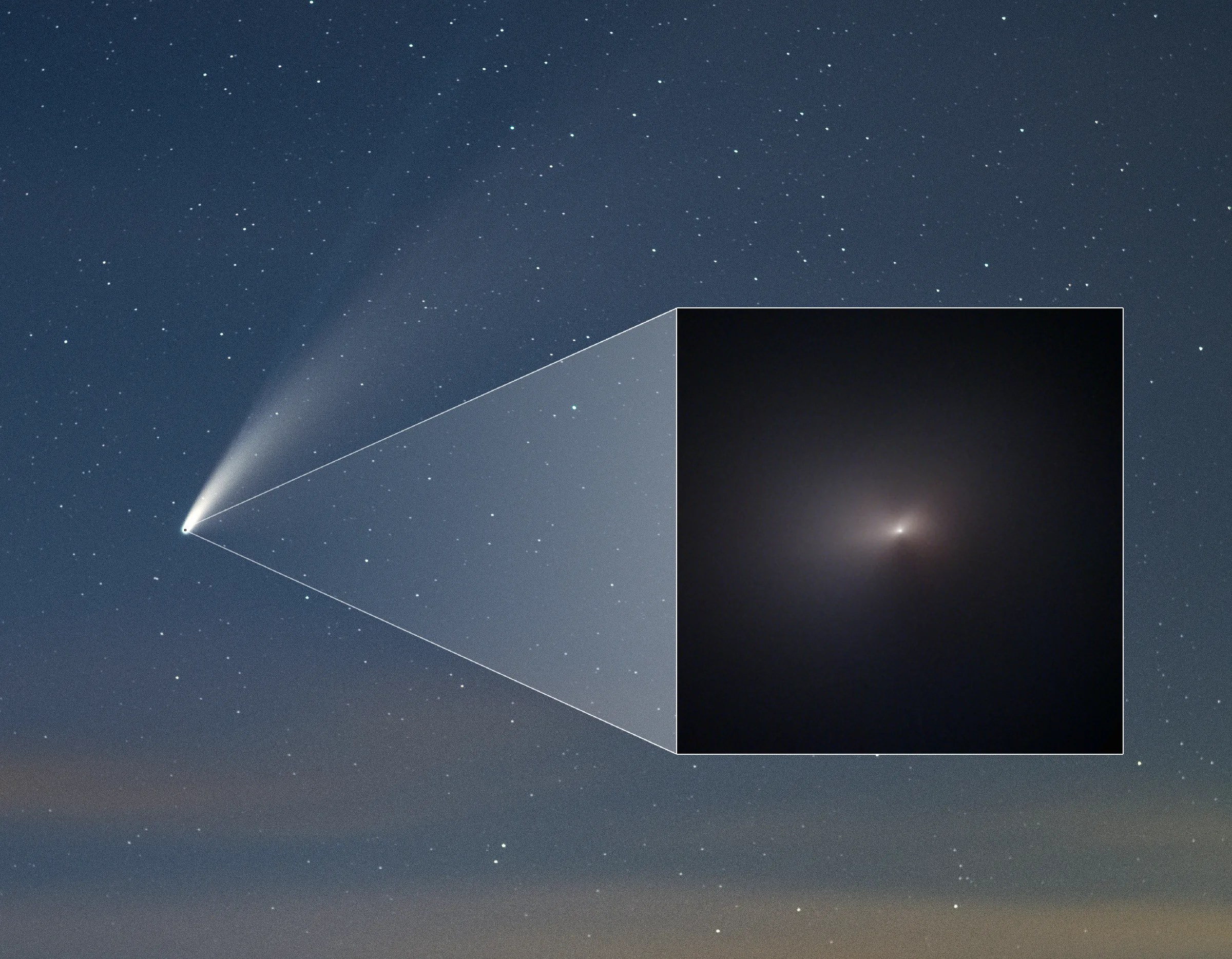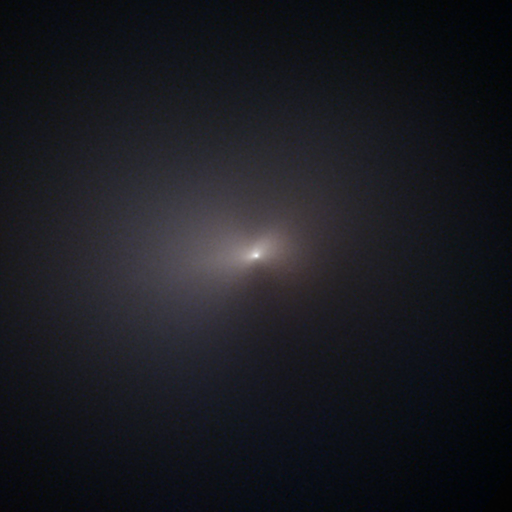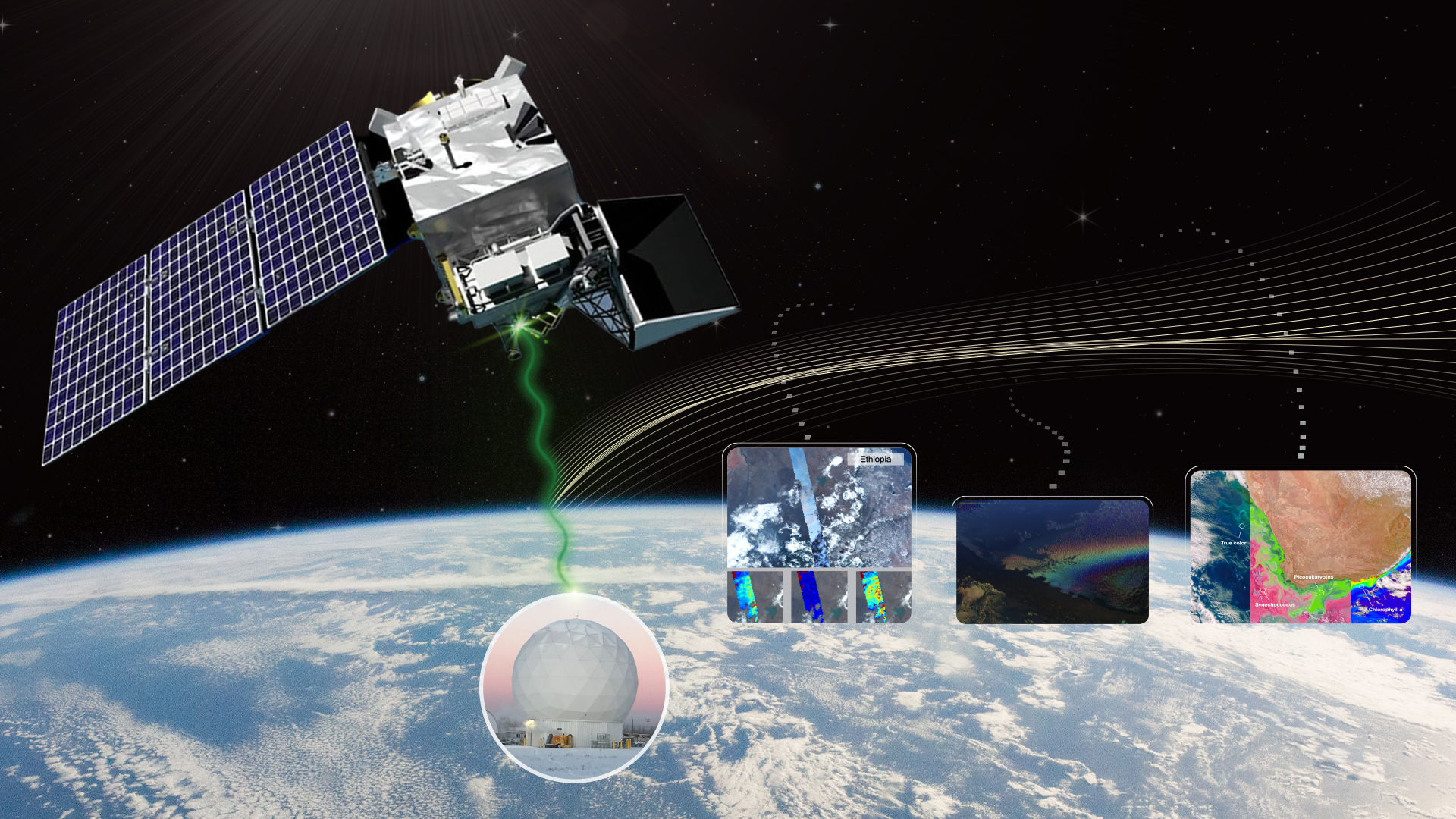3 min read

NASA Hubble Space Telescope images of comet NEOWISE, taken on Aug. 8, zero in on the visitor’s coma, the gossamer shell of gas and dust that surrounds its nucleus as it is heated by the Sun. This is the first time Hubble has photographed a comet of this brightness at such resolution after this close of a pass by the Sun.
The comet photos were taken after NEOWISE skimmed closest to the Sun on July 3, 2020, at a distance of 27 million miles (43 million kilometers). Other comets often break apart due to thermal and gravitational stresses at such close encounters, but Hubble’s view shows that apparently NEOWISE’s solid nucleus stayed intact.

“Hubble has far better resolution than we can get with any other telescope of this comet,” said lead researcher Qicheng Zhang of Caltech in Pasadena, California. “That resolution is very key for seeing details very close to the nucleus. It lets us see changes in the dust right after it’s stripped from that nucleus due to solar heat, sampling dust as close to the original properties of the comet as possible.”
The heart of the comet, its icy nucleus, is too small to be seen by Hubble. The ball of ice may be no more than 3 miles (4.8 kilometers) across. Instead, the Hubble image captures a portion of the vast cloud of gas and dust enveloping the nucleus, which measures about 11,000 miles (18,000 kilometers) across in this photo. Hubble resolves a pair of jets from the nucleus shooting out in opposite directions. They emerge from the nucleus as cones of dust and gas, and then are curved into broader fan-like structures by the rotation of the nucleus. Jets are the result of ice sublimating beneath the surface with the resulting dust/gas being squeezed out at high velocity.

The Hubble photos may help reveal the color of the comet’s dust and how those colors change as the comet moves away from the Sun. This, in turn, may explain how solar heat affects the composition and structure of that dust in the comet’s coma. The ultimate goal here would be to learn the original properties of the dust to learn more about the conditions of the early solar system in which it formed.
Comet NEOWISE is considered the brightest comet visible from the Northern Hemisphere since 1997’s Hale-Bopp. It’s headed beyond the outer solar system, now traveling at a whopping 144,000 miles per hour. It will not return to the Sun for another nearly 7,000 years.
Researchers are currently delving more into the data to see what they’re able to confirm.
NASA’s Near-Earth Object Wide-field Infrared Survey Explorer (NEOWISE) mission first discovered its namesake comet in March 2020. As the comet made its way closer to the Sun, searing heat melted its ices, unleashing dust and gas that leaves the signature tails. Throughout the summer, ground-based sky watchers in the Northern Hemisphere were able to catch a view of the traveler moving across the sky.
The Hubble Space Telescope is a project of international cooperation between NASA and ESA (European Space Agency). NASA’s Goddard Space Flight Center in Greenbelt, Maryland, manages the telescope. The Space Telescope Science Institute (STScI) in Baltimore conducts Hubble science operations. STScI is operated for NASA by the Association of Universities for Research in Astronomy in Washington, D.C.
Contacts:
Claire Andreoli
NASA's Goddard Space Flight Center, Greenbelt, Md.
301-286-1940
claire.andreoli@nasa.gov
Hannah Braun / Ray Villard
Space Telescope Science Institute, Baltimore
410-338-4244 / 410-338-4514
hbraun@stsci.edu / villard@stsci.edu
Qicheng Zhang
Caltech, Pasadena, Calif.
qicheng@cometary.org







